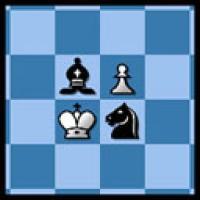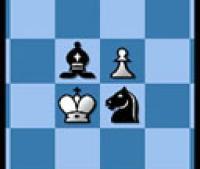
Book Review: How To Reassess Your Chess
Imagine, if you will, a man named 'Silman' enters your home, duct tapes you to a chair and precedes to give you a thorough trepanning. He then pours hot lightening through the aforementioned hole in your head and into your skull. Producing a cork from a pocket in his jeans, he rams it home to stop your noggin from leaking, and then gives your head a thorough shaking for good measure. Sauntering towards the door, and just before he disappears into the night, he gives you a quick wave that says, "Have fun!."
My usual hyperbole aside, that's pretty much the take-away from my first reading of Jeremy Silman's excellent book, How To Reassess Your Chess.
If you've ever had a look around for a good chess book, you've undoubtably run across at least a mention of this book. And, if you've also looked at reviews of this book, it's highly unlikely that you've ever read anything negative. I'm here to tell you that whatever you've previously read about How To Reassess Your Chess, it was likely not glowing enough.
For the most part, Reassess Your Chess is about strategy in the middle game so, strictly speaking, this isn't really a book for the lower rated beginners among us. However, I consider myself a beginner and I gained quite a bit of useful information from my first time through Reassess Your Chess, so I figure there are plenty of other chess beginners that would benefit from this book.
This book isn't entirely devoid of tactics, though. Somewhat strangely, and seemingly out of place, is the section at the beginning of the book which details some endgame theory. This info is both interesting and helpful, but despite Silman's words to the contrary, I'm not convinced it should be in this book, particularly since Silman has an entire (and excellent) book devoted to the endgame.
Another tactical section of Reassess Your Chess contains some outstanding words about counting, calculation and combinations.
The rest of this book is dedicated to the Silman thinking technique. In short, this method is about imbalances: how to recognize them, how to create them, and how to capitalize on them. It's a bit hard to summarize this without basically recounting the entire book, but I'll try to give you a feel for it by way of example.
Let's say you are playing a game in which your opponent has the only half-open file, while you have spied the perfect outpost for one of your knights, deep in enemy territory. The board itself is telling you what to do! You must maneuver one of your knights to that permanent outpost so as to harass your enemy while you shutdown his rook play on the half-open file!
This is obviously a brutal oversimplification, but you get the idea. Silman covers so many forms of imbalances and how to approach them that I'm tempted to say that he covers everything anyone could ever need out of a middlegame text. That would probably be incorrect, but I can say with confidence that this book will enlighten you like very few others, and you will come back to How To Reassess Your Chess for many years to come.
I should add that although this book is mostly about imbalances in he middle game, the last section is called "Using Imbalances In Every Phase Of The Game." Unlike the first section about endgame tactics, this final section dovetails with the rest of the book very well. In particular, Silman shows the importance of creating opening imbalances that can by nurtured in the middlegame as well as preparing imbalances to be used in the endgame. He really does cover all the bases.
As with all good chess books, at least in my opinion, there are some good exercises for the reader, and the solutions to the problems are also great. My usual complaint is that there are too few for my tastes, but there is a workbook full of related exercises, so the general dearth of chess problems is rectified elsewhere. I have that book, and after I finish my first pass through Silman's Endgame Course I'll get right on that workbook!
Beyond all of the chessy goodness that Silman conveys, I enjoy his writing style. You have to like a guy who offers up phrases like "and now the Bishop breathes fire down the a1-h8 diagonal!"
Now we get down to the real nitty-gritty: should you read this book? I consider myself a beginner, and I write these articles for other beginners. Of course, the term 'beginner' is a bit subjective. Currently I'm rated about 1400 here on Chess.com and my understanding is that the rankings here are inflated by about 200 points. Since I found this book quite readable, anyone ranked about my level should do OK by this book. I'm certainly not claiming that I completely absorbed everything in this book; far from it. But, as Silman himself states, this book should be reread every six months to acquire the most benefit, and I corroborate this statement. I'll take a wild guess and say that if you are ranked more than a couple hundred points less than I, this book might be a bit much for you, depending on your tenacity, of course.
Should you buy this book? What, you haven't ordered your copy yet?!?!? Seriously, though, if you plan to stick with chess for a significant part of your future, How To Reassess Your Chess is almost a necessity. It's one of those books that every chess player should own, in my estimation.
That's a wrap! I'm Stick, your resident wordslinger, and I'll see y'all out there on the gridiron!

